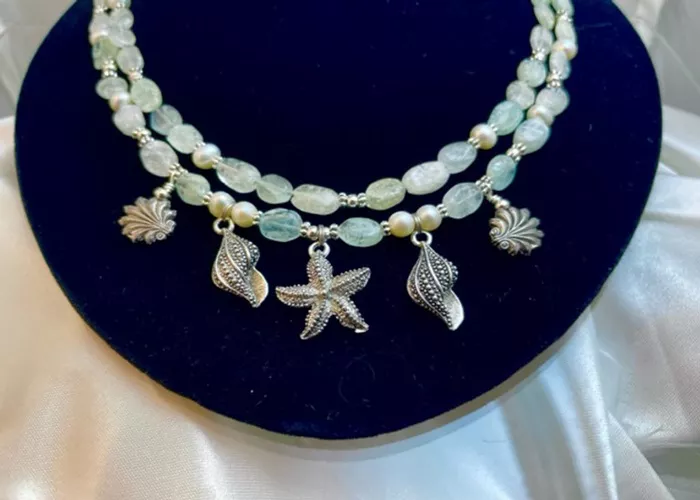Aquamarine has captivated humanity for centuries with its mesmerizing blue hues reminiscent of tropical oceans. As a member of the beryl family alongside emeralds, this March birthstone has been prized by royalty and celebrities alike. However, beneath its sparkling surface lies a complex history of ethical dilemmas that shook the jewelry industry to its core. The aquamarine controversy wasn’t just about gem treatments – it exposed systemic issues of transparency, consumer rights, and the very definition of value in precious stones.
Understanding Aquamarine: Nature’s Blue Treasure
Geological Formation and Characteristics
Aquamarine forms in pegmatite veins under specific geological conditions, with major deposits found in Brazil, Nigeria, Madagascar, and Pakistan. Unlike its cousin emerald which is valued for inclusions, premium aquamarine is prized for its glass-like clarity. The stone’s signature blue comes from trace amounts of iron within its crystal structure, with color intensity varying dramatically based on geographic origin.
The Color Spectrum and Valuation Factors
Natural aquamarine occurs in a range from nearly colorless to deep blue-green. The most valuable specimens display a pure, saturated “Santa Maria” blue (named after the famous Brazilian mine). However, such naturally vibrant stones are exceptionally rare, comprising less than 5% of production. This scarcity created economic incentives for treatments that could enhance more common pale specimens.
The Treatment Controversy: Heating Up the Debate
The Science Behind Heat Treatment
Most commercial aquamarines undergo heat treatment at 375-450°C to:
- Remove unwanted yellow/green secondary hues
- Achieve more desirable pure blue tones
- Stabilize color consistency across batches
This process alters the oxidation state of iron impurities, permanently changing the stone’s appearance. Unlike some gem treatments, the effects are irreversible and undetectable without sophisticated lab equipment.
Industry Practices vs Consumer Expectations
By the 1990s, an estimated 90-95% of aquamarines in jewelry were heat-treated, yet disclosure practices varied wildly:
- High-end retailers often mentioned treatments in fine print
- Mass-market sellers frequently omitted this information
- Some vendors actively marketed treated stones as “natural”
This discrepancy created a two-tier market where uninformed buyers often paid natural-stone premiums for enhanced material.
The Synthetic Storm: Lab-Created Confusion
Technological Advancements in Beryl Synthesis
The 2000s saw dramatic improvements in hydrothermal beryl growth techniques. Modern synthetic aquamarines could:
- Perfectly match natural color spectra
- Replicate characteristic inclusions
- Be produced in commercial quantities
Fraudulent Practices Emerge
Unscrupulous dealers began:
- Selling synthetics as natural with fake certificates
- Mixing lab-grown stones in parcels of natural goods
- Creating “hybrid” stones with natural bases and synthetic overgrowth
The FTC reported a 300% increase in synthetic aquamarine fraud cases between 2005-2015.
Market Consequences: Trust Collapse and Price Volatility
Consumer Backlash and Legal Actions
High-profile cases included:
- A 2012 class-action lawsuit against a major retailer for $18M
- 2015 FTC fines against three online dealers
- Multiple jewelry chains revising return policies
Price Disparities Emerge
Market analysis showed:
- Undisclosed treated stones sold for 3-5x their true value
- Natural, untreated premium colors became 10-15x more valuable
- Synthetic prices collapsed by 70% as detection methods improved
Industry Reformation: Path to Transparency
New Certification Standards
Leading labs implemented:
- Mandatory treatment disclosure policies
- Enhanced synthetic detection protocols
- Standardized terminology (e.g., “heated” vs “natural”)
Retailer Accountability Programs
Initiatives included:
- Universal disclosure agreements
- Staff training on ethical sales practices
- Third-party auditing systems
The Modern Aquamarine Market: Lessons Learned
Current Best Practices
Today’s ethical aquamarine trade emphasizes:
- Clear treatment disclosure at point of sale
- Proper use of terms like “natural,” “treated,” and “lab-created”
- Investment in consumer education programs
Ongoing Challenges
Remaining issues include:
- Detection of new treatment methods
- Online marketplace accountability
- Standardization across global markets
Broader Implications for the Jewelry Industry
The aquamarine controversy served as a catalyst for wider reforms affecting:
- Sapphire and ruby heat treatment disclosure
- Diamond fracture-filling regulations
- Pearl treatment classification systems
Conclusion
While the aquamarine controversy exposed significant flaws in gem trade practices, it ultimately led to meaningful reforms that benefit both consumers and ethical businesses. Today’s buyers have more tools than ever to make informed decisions, from advanced certification to blockchain tracking systems. The industry’s painful lessons continue to shape evolving standards of transparency, ensuring that aquamarine’s beauty can be appreciated without hidden compromises.
Related Topics:
Is Aquamarine Good for Wealth?
What Is Aquamarine Stone Known For?
Do Aquamarine Stones Scratch Easily?


